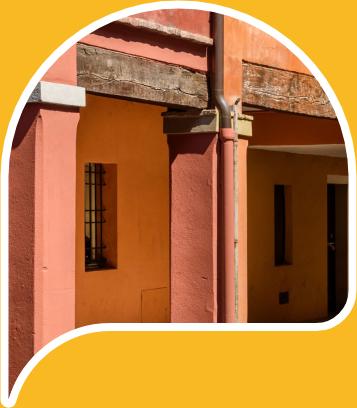Santa Caterina e Saragozza

These porticoes belong to a series of minor residential buildings (modest dwellings with small living spaces) that have maintained the original style and structural model within a social context that has itself remained “popular” and authentic, not having been subject to gentrification.
The architrave porticoes of Santa Caterina are a rare and precious testament to one of the oldest monastic property allotments carried out in one of the most dynamic European medieval cities.
These fragile structures, after surviving the demolition of this area in the 19th and 20th centuries, were carefully restored thanks to the famous Conservation Plan of the Bologna Historic Centre of 1970. Since then, they have been recognised internationally as a benchmark for the safeguarding of historic residential heritage.
The component comprises the entire architectural matrix of a medieval city block. The porticoes, together with their courtyard areas have constantly maintained their use as popular housing since the middle ages. The narrow structures typical of the Gothic period have expanded towards the street to increase the volume of the upper floors.
The portico is a kind of filter space between the street and the ground floor shops, in close symbiosis with the internal courtyards. This relationship is still clearly visible even now.

